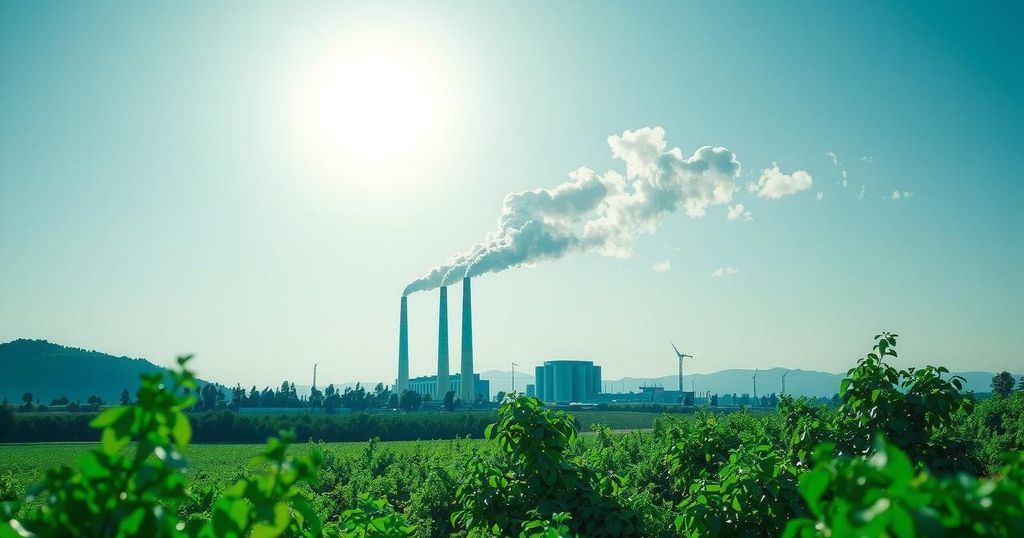China has missed its carbon emissions target for 2024, with carbon intensity falling 3.4%, short of the 3.9% goal. This shortfall raises concerns about meeting longer-term climate goals and maintaining international temperature benchmarks. China’s transition to renewable energy shows promise, yet significant challenges remain as it seeks to balance industrial growth and sustainable practices.
China has not met a significant carbon emissions target set for 2024, resulting in concerns about its future commitment to achieving carbon neutrality. The country’s carbon intensity fell by only 3.4%, missing its official goal of 3.9%, as reported by the National Bureau of Statistics. This shortfall poses challenges to global climate efforts, given China’s significant role as the leading contributor to global emissions, accounting for approximately 30% of the total.
In addition to the 2024 target, China is also failing to meet its longer-term objective of reducing carbon intensity by 18% from 2020 to 2025 as outlined in the Communist Party’s five-year plan. President Xi Jinping’s commitments emphasize reaching peak emissions by the end of the decade and achieving carbon neutrality by 2060. The international community closely monitors China’s performance due to its dual status as the primary emitter and a leader in renewable energy investments.
The global goal of maintaining temperature rise below 1.5 degrees Celsius, as established by the United Nations, is at stake due to China’s performance. In 2024, temperatures surpassed this limit for the first time, raising concerns about future climatic stability. Muyi Yang, a senior energy analyst, indicated that while the economy is growing, emissions reduction has not matched this growth, leading to increasing carbon emissions amidst rising electricity demand.
Despite these challenges, China has made significant strides in renewable energy, with wind, solar, and hydropower collectively meeting over a quarter of the total energy demand. According to Eric Fishman, senior manager at the Lantau Group, renewable sources accounted for 75% of incremental energy demand growth in 2024, amounting to substantial clean energy production. This achievement is largely attributed to substantial government support and initiatives aimed at fostering ecological sustainability.
China has initiated measures to curb high-emission projects and launched the Emissions Trading Scheme, creating the world’s largest carbon trading market. Anika Patel, a China analyst, elaborated on the shift from traditional manufacturing to more sustainable sectors, highlighting government interests in transitioning towards innovation-driven production involving solar panels and electric vehicles.
Comparatively, the Communist Party plans to announce new carbon emission targets for the period between 2026 and 2030, which will influence future policies and the trajectory of the country’s energy sector. Yao Zhe, a global policy adviser for Greenpeace, expressed reasonable optimism about China reaching peak carbon emissions before 2030, yet noted the uncertainties regarding the complete phase-out of coal in the long term. He emphasized the urgent need for structural reforms in the energy sector post-peak if carbon neutrality is to be achieved effectively.
China’s failure to meet its 2024 emissions target highlights significant challenges within its climate strategy, particularly concerning emissions intensity and compliance with global standards. Despite progress in renewable energy, the reliance on industrial growth and increasing energy demands complicate the pathway to carbon neutrality. Future emissions targets will be crucial in determining the direction of China’s energy policies and its role in global climate efforts.
Original Source: www.aljazeera.com




